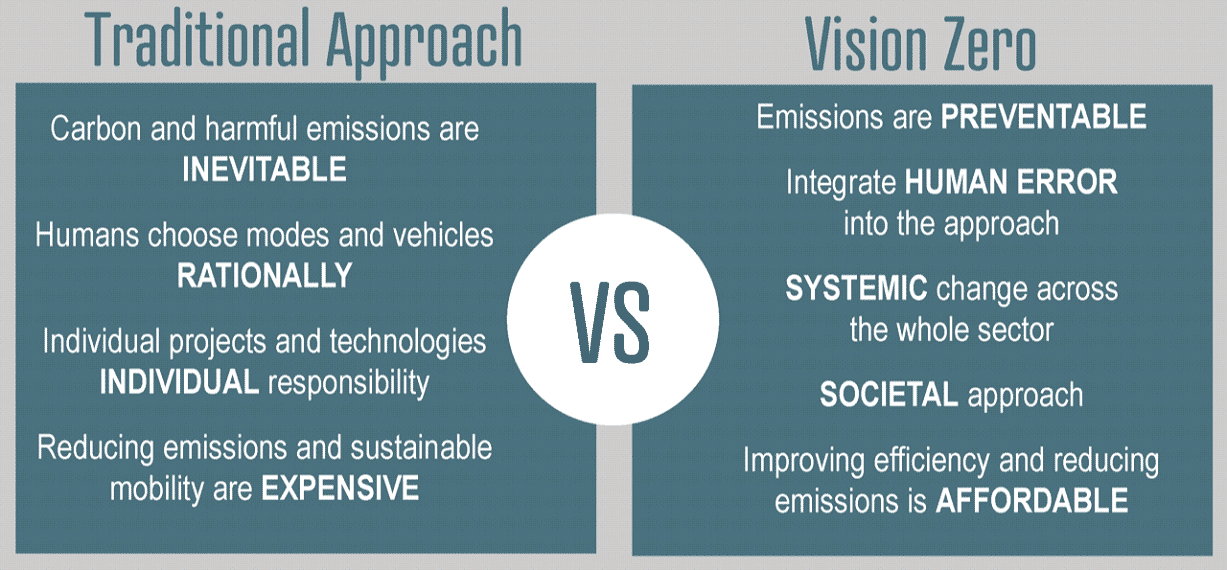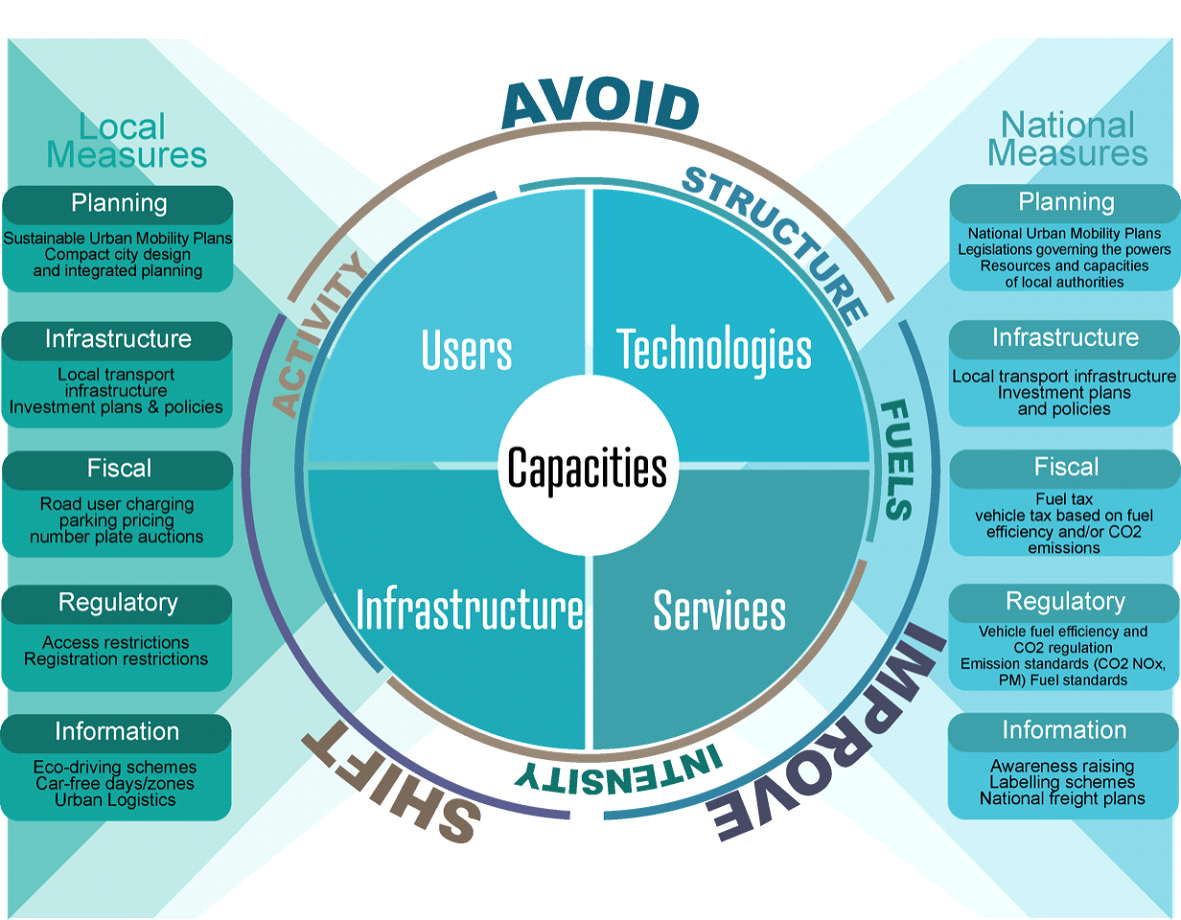This is part of a series of influencer blogs for Economist Impact's rEV Index.
The electrification of the vehicle fleet will make an important contribution to improved air quality and is an essential building block for global climate change mitigation strategies. New e-mobility solutions and electric vehicle (EV) concepts hold great potential for economic development, well beyond traditional transport solutions. But EVs—and other technologies, such as drones and ride-hailing applications—create an illusion that innovation alone can solve our sustainability challenges.
While it is true that electric mobility will be a vital cornerstone in the decarbonisation of the transport sector, it is equally true that this is only a part of the wider transition that is required to combine climate action with access for all, safe roads, clean air and liveable cities. A world with two billion cars on our roads will be unsustainable, regardless of the propulsion technologies, if we are constantly stuck in traffic, public land is wasted for highways and parking lots, and precious resources and funds are put to ineffective use.

Revisiting our assumptions on transport emissions
For a truly transformative change, the approach to decarbonising transport needs to go well beyond the vehicle and even the sector alone. An integrated multi-modal, multi-level sustainable transport package should tackle all aspects of the mobility system and seek alignment and complementarity with national and local policies as well as with public and private sector actions.
To achieve this, we need to move away from the traditional perspective of accepting that air pollution and greenhouse gas (GHG) emissions—and also congestion and road crashes—are inevitable consequences of maintaining our access to mobility. This traditional perspective assumes that we all choose our modes of transport and vehicles rationally, counts on individual responsibility, and claims that reducing emissions is more expensive than maintaining the status quo.
Instead, we need to move to a systemic approach for sustainable, decarbonised transport. This can build on years of experiences from the road safety realm, beginning from the first adoption of “vision zero” in Sweden in 1997 which has revolutionised the approach to improving road safety.

Integrated and systemic change to achieve sustainable mobility for all
There are now plenty of technological and operational options readily available which can drastically reduce CO2 emissions and improve local air quality. If we provide more sustainable choices to transport users and signal a clear preference—for example, through pricing or regulation—we can nudge consumers towards more sustainable choices.
Individual projects and technologies can contribute to the change, but only an integrated and systemic change across the whole sector and beyond—including the energy and resource dimensions—will enable a shift towards a net-zero transport system. For this, a societal perspective is needed to identify appropriate solutions. This is also vital to leverage the potential for cost savings of a sustainable mobility system.
A “safe system” approach for a transport sector that moves us towards net-zero emissions and that enables access to sustainable mobility for all needs to focus on four interconnected pillars: users, technologies, services and infrastructures.
Indeed, minimising the carbon content in vehicle technologies is a key systemic change that is required in the mobility transition. Hence, the shift to electric mobility has a vital role to play in decarbonising the sector. But the overall contribution of electric mobility to climate change mitigation and sustainable development depends critically on the integration with the other pillars of the system. EVs need to be fit-for-purpose—this means that they need to be resource- and energy-efficient; well-integrated with other mobility services and infrastructure; and designed for mobility as a service, which provides access for all.
Unlocking the full potential of the transition
To adopt a “safe system” approach, a better understanding of the needs and opportunities for key players in the sector is important, including: industry, mobility service providers, infrastructure developers, local and national policy makers and transport users. Essential building blocks for the transition to sustainable mobility include a complementary package of measures form the local and national level that provide a framework for the transformative change, including planning, infrastructure, fiscal, regulatory and information measures.

A transition to a systemic approach has the potential to unlock trillions of dollars in cost savings from a whole-society perspective—by 2050, a low-carbon mobility system could cut transport-related annual costs by over US$5 trillion globally. More sustainable travel patterns can generate substantial further complementary benefits that could help in transforming cities into more liveable and economically efficient centres.
Policy interventions to foster the electrification of the sector can help towards achieving a range of objectives—for example, air quality improvements and reductions of GHG emissions. But addressing all key objectives—such as access to safe roads and liveable cities for all—requires a much broader package of measures. Linking and packaging policies is also a key tool to generate synergies between different measures and to align different players.
Integrating electric mobility within a wider system approach in practice
Electric mobility needs to be embedded within an overarching approach that consists of several levels of intervention that shape not just vehicle technology, but also mobility patterns and urban form. So, how can we adopt such an approach in practice? An integrated approach includes:
- Technologies: In terms of EV technologies, there should be a clear focus on drastically downsizing vehicle size and power, fostering resource- and energy-efficiency and boosting cost-effectiveness. This is countering the trend of the last few decades towards bigger, faster and more powerful cars, which has eradicated almost all efficiency gains in powertrain technologies. Only then will the electrification of the entire vehicle fleet be viable, as well as affordable. In addition, EV concepts should be designed for shared use-cases which will further foster access and affordability.
Other technological innovations, such as automation, should focus on complementarity with public transport systems, and should avoid competition with non-motorised transport. This is vital to the viability of public transport services, and also encourages healthy and active mobility. Automation could play an important role in the provision of on-demand mobility services in rural areas where traditional public transport options are not viable. - Infrastructure: Providing access for all to high-quality public transport services, as well as infrastructure for walking and cycling, is a vital part of a systemic approach to sustainable mobility. To enable this, compact city development can help with mixed-use, polycentric structures and short travel distances. A comprehensive network of charging solutions and reliable availability of charging points is a crucial element for a systemic change to drive a shift to EVs.
- Services: Access to mobility services such as shared and ride-hailing services is another important element for sustainable mobility. Services should be harmonised across available mobility services to encourage the use of the most efficient option.
- Users: Users of the transport system should have access to transparent information about the cost, time, safety and other relevant aspects of different available mobility solutions and vehicles. To further guide consumer choices, differentiated pricing should favour more efficient modes and vehicles. Regulation of vehicle standards and technologies could further ensure that consumers have sufficient access to safe and efficient vehicles.
There is a general assumption that the transformation towards sustainability in the transport sector will be very costly. While the shift towards more sustainable mobility infrastructure, services and vehicle technologies will require innovation and investment, the overall benefits and savings far outweigh the costs. A sustainable mobility future will require only a fraction of the costs and resources that are needed today. Achieving this, however, will require a systemic change and shift from an individual perspective towards mobility as a product, to a societal perspective towards mobility as a service.
Find out more about EV readiness across the UK and in other important markets in Europe and globally from the rEV Index.
About the author:
Oliver Lah heads a joint research group at the Technical University Berlin and the Wuppertal Institute for Climate Environment and Energy. He coordinates the Urban Electric Mobility Initiative, a UN-Habitat Action Platform, and is a Research Affiliate at the MIT Energy Initiative and an Adjunct Professor at the Blekinge Institute of Technology (BTH). Prior to that Oliver worked with UN-Habitat, UN Environment, UNDP, OECD/ITF and GIZ on urban mobility and climate change issues. He was a lead author for the Fifth IPCC Assessment Report, was a member of the Habitat III Policy Unit on Urban Services and Technology and worked at the Ministry of Transport of New Zealand and the Minister of State to the German Federal Chancellor.